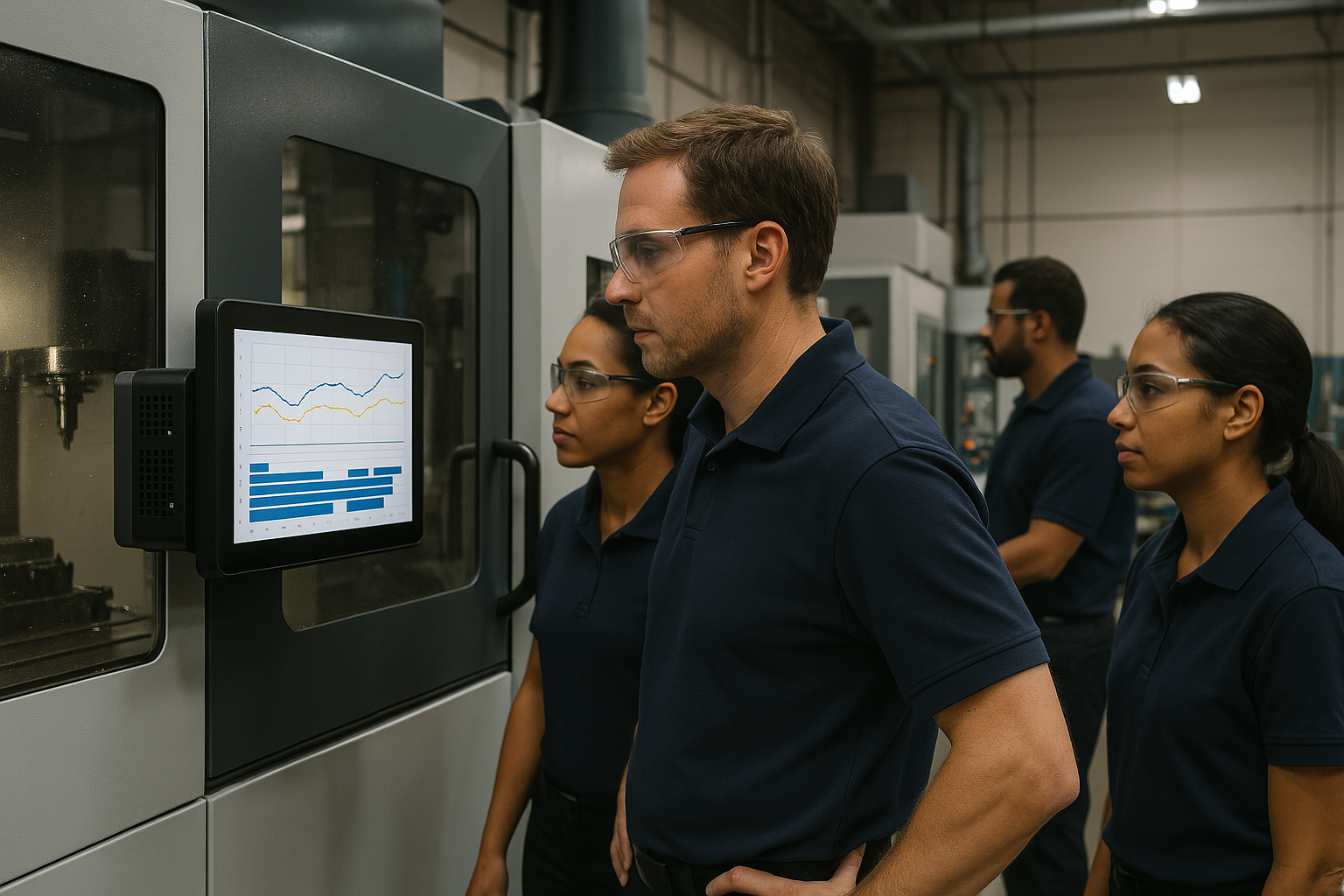
Machine Utilization Tracking: Maximizing Equipment Performance
Introduction
Machine utilization is a key indicator for measuring equipment efficiency in production. A machine may be high-performing, but if it is not used optimally, its impact on production remains limited. Better management of machine utilization helps optimize production planning, reduce downtime, and improve overall equipment effectiveness.
This article explores how to track, analyze, and improve the utilization of machine tools through machine monitoring software, optimized CNC programs, and adapted workforce planning.
What is Machine Utilization?
Machine utilization refers to the percentage of time equipment is operating relative to its total available time. This ratio helps evaluate a machine tool’s efficiency and identify improvement opportunities.
Formula for Calculating Machine Utilization:
For example, if a machine is available for 10 hours a day but only runs for 7 hours, its utilization is:
A high utilization rate indicates effective production planning, while a low rate may reveal unplanned downtime, excessive changeover times, or underused equipment.
Factors Affecting Machine Utilization
1. Unplanned Downtime
Breakdowns and unexpected stops directly reduce machine utilization. Machine monitoring software helps identify recurring causes and implement preventive maintenance to avoid these interruptions.
2. Excessive Changeover Times
Changeover times slow down production and reduce actual machine operating time. Process optimization through the SMED (Single-Minute Exchange of Die) method helps shorten transitions and improve overall equipment efficiency.
3. Poor Production Planning
Ineffective production planning can lead to prolonged machine inactivity. Workforce planning software and a well-defined production schedule ensure more efficient resource use.
4. Underutilization of Equipment
Even when a machine tool is running, it may not be used to its full potential. Optimizing CNC programs and adjusting cycle times can improve productivity and increase OEE (Overall Equipment Effectiveness).

Strategies to Improve Machine Utilization
1. Implement Machine Monitoring Software
Monitoring software provides real-time data on machine usage, downtime, and cycle times. These insights help optimize production settings and identify improvement opportunities.
2. Automate Production Planning
Using production planning software allows you to adjust schedules and task allocation to maximize machine use. Live planning helps respond quickly to disruptions and avoid idle periods.
3. Improve Maintenance and Downtime Management
A preventive maintenance program limits interruptions and ensures better workforce planning for technical interventions. Downtime tracking software helps analyze trends and reduce breakdown frequency.
4. Reduce Changeover Times
Optimizing changeovers using SMED and automating setups increase equipment runtime and reduce production losses.
5. Optimize CNC Program Utilization
CNC program tracking software helps analyze and fine-tune machine parameters for maximum efficiency. More precise setup reduces material waste and improves production rate.
Use Case: Improving Machine Utilization
A metal parts manufacturing company wanted to improve its machine utilization, which stood at 65%. After implementing machine monitoring software and optimizing its production planning, it was able to:
-
Increase machine utilization to 85% by reducing unplanned downtime
-
Decrease changeover time by 30% through process optimization
-
Improve preventive maintenance and reduce breakdown frequency
Thanks to these improvements, the company increased its production capacity without adding new equipment.
Conclusion
Machine utilization is a key indicator for measuring equipment efficiency and optimizing production planning. By adopting machine monitoring software, improving downtime management, and optimizing cycle times, manufacturers can maximize the performance of their machine tools.
Automation, CNC program analysis, and workforce planning allow full use of existing equipment and improve production profitability. By implementing these strategies, companies can reduce waste, improve their OEE, and increase competitiveness in the market.





